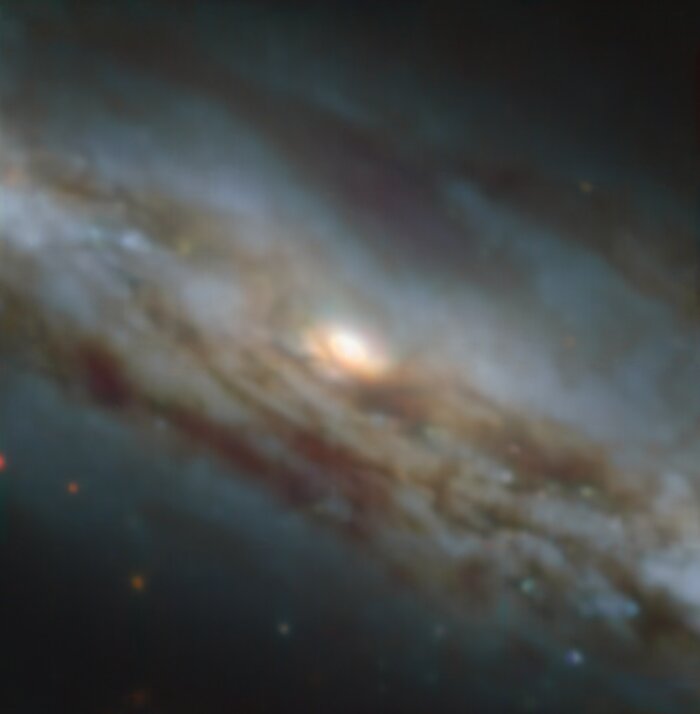A black hole caught blowing a gust
Lurking about 70 million light years away from Earth in the constellation Grus, you will find the galaxy NGC 7582 — a spiral galaxy harbouring a supermassive black hole at its core. These images were captured as part of a study using the MUSE instrument on ESO’s Very Large Telescope (VLT) to uncover the effect of an active black hole on the formation of stars in the galaxy.
The galaxy contains an active galactic nucleus (AGN) — an extremely energetic central engine powered by the supermassive black hole gobbling up material in its immediate surroundings. Matter heats up in this process, launching huge amounts of energy and powerful winds into the surrounding area. But what effect does this have on the galaxy at large?
To find out, a recent study, led by Stéphanie Juneau from NSF's NOIRLab in the USA, looked at the distribution of different ionised elements in the galaxy. This image shows a classical view of this galaxy, with dust lanes obscuring blue and orange starlight. Compare it with this image, which shows the cone-shaped material flowing out of the AGN in blue.
MUSE also allowed the team to map the motion of the stars and gas. They discovered that NGC 7582 may have a structure surrounding its central supermassive black hole that shields the rest of the galaxy from the harsh outflow of energy coming from the AGN, diverting it away from it in the form of an extremely powerful wind.
Alternative versions of this image
- Side-by-side comparison
- Interactive comparison
- Video alternating between both images
- Individual image showing the star-formation and AGN activity
ESO / Juneau et al.
O zdjęciu
| Identyfikator: | potw2206d |
| Typ: | Obserwacje |
| Data publikacji: | 7 lutego 2022 06:00 |
| Rozmiar: | 598 x 610 px |
O obiekcie
| Nazwa: | NGC 7582 |
| Typ: | Local Universe : Galaxy : Type : Spiral |
| Odległość: | 70 milion lat świetlnych |
| Constellation: | Grus |
| Kategoria: | Galaxies |
Współrzędne
| Pozycja (RA): | 23 18 23.71 |
| Pozycja (Dec): | -42° 22' 14.08" |
| Pole widzenia: | 1.00 x 1.02 arcminutes |
| Orientacja: | North is 89.9° lewo of vertical |
Kolory i filtry
| Pasmo | Długość fali | Teleskop |
|---|---|---|
| Optyczny V | 555 nm | Very Large Telescope MUSE |
| Optyczny R | 625 nm | Very Large Telescope MUSE |
| Optyczny I | 775 nm | Very Large Telescope MUSE |

